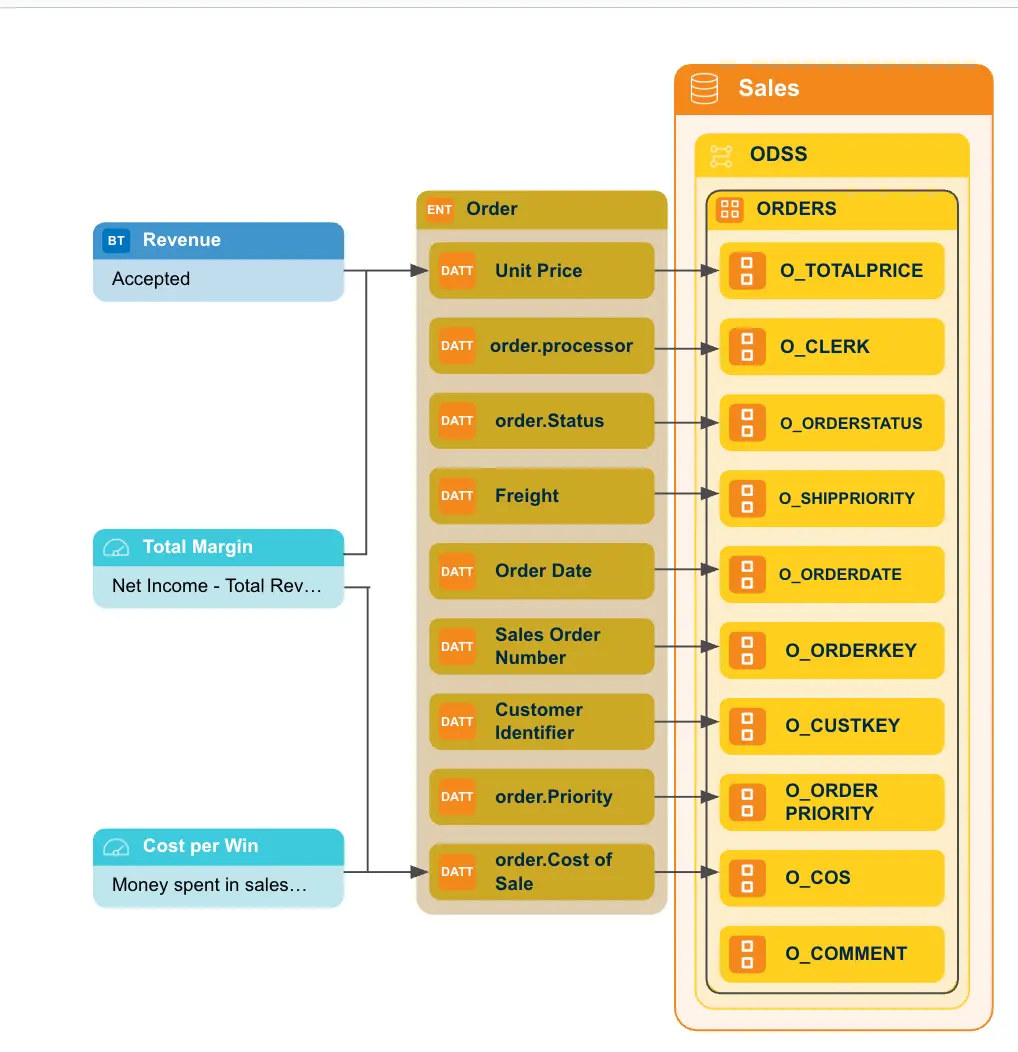The secret to trusted AI? It's your semantic layer

Despite the promise of modern self-service BI tools, true data democratization remains out of reach. The reality is that 80% of business users still rely on a small group of technical experts for critical data tasks, from finding and integrating data to delivering final insights.
This bottleneck exists because of a fundamental language barrier: raw, technical data doesn't speak the language of the business.
This is precisely the problem the semantic layer is designed to solve.It acts as a universal translator, hiding technical complexity and providing the clear definitions, metrics, and KPIs that allow both people and AI agents to interact with information using natural business language.
What is a semantic layer?
A semantic layer is the essential bridge between your complex technical data and the business users who need to make sense of it. It solves the problem of cryptic table names and complex joins by translating raw data into an intuitive, business-friendly model. By also linking this data to key metrics and KPIs, it provides a unified view of your information, enabling everyone—from business analysts to AI agents—to access and analyze data using familiar business terms.

How a semantic layer builds the bridge
A well-designed semantic layer makes data trustworthy and actionable by design.
- Abstraction: A semantic layer hides the complexity of the underlying data sources. Your business users don't need to know if the data is coming from a Snowflake data warehouse, a legacy database, or a cloud application; they just interact with a clean, logical model.
- Business-oriented: The entire model is structured around the language of your business. It uses different types of context to create meaning, including:
- Business terms: Standardized definitions for concepts like "Net Revenue" or "Active Customer."
- Data entities and attributes: Logical groupings of data, such as a "Customer" entity with attributes like "Name" and "Region."
- Measures, metrics and KPIs: The key performance indicators that drive your business.
- Contextualized: A semantic layer doesn't just define terms; it provides context and shows the relationships between different data elements. It helps users understand how a "Sales Transaction" relates to a "Customer" and a "Product," creating a rich, interconnected view of your data.
- It includes business logic: The layer incorporates critical business metrics, KPIs, and aggregations. This ensures that when a user asks for "Total Sales," the calculation is performed consistently and correctly every single time, no matter who is asking or which tool they are using.
- Mapped to data: While it's a business-facing model, it is directly and reliably linked to the physical data sources. This mapping is what allows a query in simple business language to be translated into a complex SQL query that runs against the correct tables and columns.
- Actionable: The true value of a semantic layer is that it's actionable, enabling teams to make faster and more confident data-driven decisions. It achieves this by facilitating self-service BI and empowering AI agents to correctly interpret data. This focus on how data should be used is what distinguishes it from a logical data model, which is only concerned with how data is stored.
The AI tipping point: Why context is now mission-critical
If the semantic layer is so important, why is it gaining so much momentum now? The answer is simple: AI.
While humans can often navigate ambiguity using tribal knowledge, AI agents rely completely on explicit, machine-readable context to function reliably. The introduction of generative AI is the catalyst that makes this scalable, by both automatically generating the semantic layer from your data and enabling AI to consume information through it. This closes the loop from data production to trusted, automated usage, which is the key to successful enterprise AI.

Your data, speaking the language of your business
When you implement a governed semantic layer, you transform your relationship with data. It becomes the engine for:
- True data democratization and improved literacy: Business users can self-serve with confidence, knowing they are using the right data. For example, making it easier to search for data sets or data products in the marketplace.
- Accelerated insights: Reporting and analysis become faster and more reliable. For example, users can automatically generate complex queries or even entire data notebooks simply by using natural language prompts.
- Trustworthy AI: Reliably deploy agentic AI on top of your data. For example, when a user asks an AI agent "What was our active customer count in Europe last quarter?", the agent uses the semantic layer to understand the official definition of "Active Customer" and query the correct, certified data source, ensuring a trustworthy and accurate answer.
Ultimately, the semantic layer is the strategic bridge between your raw data and your business outcomes. It connects the critical gap between raw, technical data and real business understanding. By turning your data into a reliable, enterprise-wide asset, it ensures that every report, analysis, and AI-driven decision is built on a foundation of clarity and confidence.
Conclusion
The semantic layer is no longer a "nice-to-have"—it's the foundation for your entire data and AI strategy. See our upcoming enhancements and the latest features designed to help you automate and scale your semantic layer on our Product Innovations page.
Keep up with the latest from Collibra
I would like to get updates about the latest Collibra content, events and more.
Thanks for signing up
You'll begin receiving educational materials and invitations to network with our community soon.
